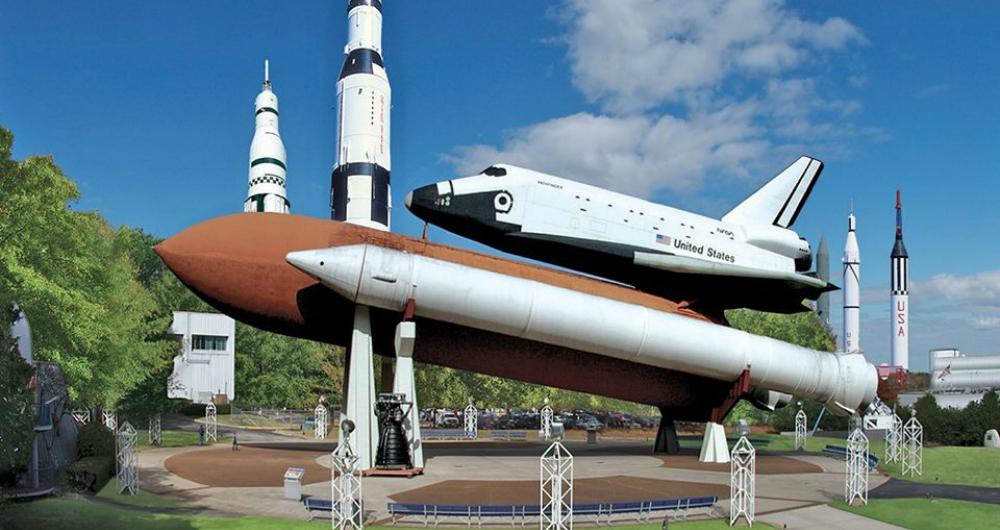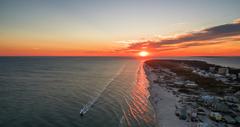Huntsville was transformed from the "Watercress Capital of the World" to a major center for technology in the 1950's by Dr. Wernher von Braun and his team of rocket scientists.The area is now home to the U.S. Space & Rocket Center (USSRC) and the country's second largest research park. The U.S. Space & Rocket Center in Alabama provides the Space Camp, a world-class educational program. This transformation grew from the fire and smoke that created the space program of the United States.
U.S. Space & Rocket Center History
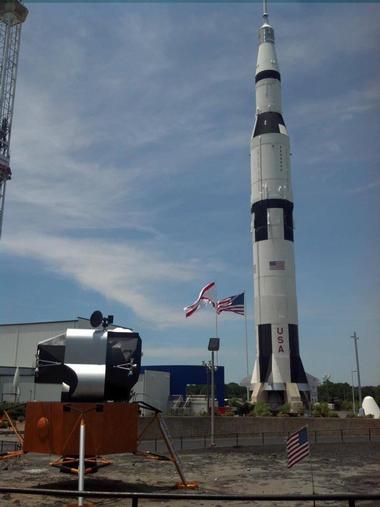
Huntsville is where the rockets that put the country's first satellite into orbit and put men on the moon were developed. It is also where the propulsion for space shuttles of today was developed, as well as where to modules for the International Space Station were designed and built. The Space Launch System, America's next great ship, is being designed in Huntsville, Alabama. The city is also home to the NASA Marshall Space Flight Center, where science on the International Space Station is monitored twenty-four hours, seven days a week at the Payload Operations Center.
Throughout the last few months of Dr. Wernher von Braun and his team refining the enormous Saturn V rockets that transported the Apollo astronauts to the moon, von Braun was also working on launching a permanent exhibit that showcased the space program's hardware. It was von Braun's idea to create a museum jointly with NASA and the United States Army Missile Command, approaching the Alabama Legislature with the idea while he was director of the Marshall Space Flight Center. The land for the museum was donated by the United States Army, and in 1970, the U.S. Space & Rocket Center opened to the public. Almost seventeen million people have visited the center since its opening.
Dozen of interactive exhibits encourage visitors to the United States Space & Rocket Center to be an astronaut for the day. The U.S. Space & Rocket Center, the world's largest spaceflight museum, is home to Robotics Camp, Space Camp, and Aviation Camp. The center's large collection of space and rocket hardware is valued in the tens of millions of dollars. The museum contains a collection representing human spaceflight's past, present, and future.
Among the hardware in the museum's collection are Explorer I, the country's first satellite, and next generation space vehicles such as Sierra Nevada's Dream Chaser. You can also admire the National Historic Landmark Saturn V moon rocket.
The United States Space & Rocket Center, a Smithsonian Institution affiliate, acts as the Official NASA Visitor Center for Marshall Space Flight Center. Visitors' experience goes beyond just exploring artifacts at the U. S. Space & Rocket Center. Through simulators such as G-Force and Space Shot, guests can experience the physics of astronaut training. The center is home to the world-class INTUITIVE® Planetarium, which boasts live, interactive programming daily under a 270-foot dome.
Main Exhibit Area at the U.S. Space & Rocket Center
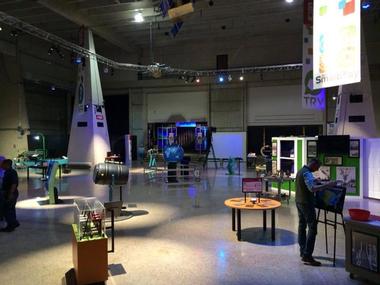
Boasting one the world's greatest collections of space and rocket memorabilia, the United States Space & Rocket Center is the NASA's Marshall Flight Center's Official Visitor Center, and is also a Smithsonian Institution Affiliate. Visitors can get a better understanding of NASA's journey to put a man on the moon during the intense Space Race through the development of the International Space Station and space shuttle program. They can also view onwards to the future to the newest technological innovations and private space ventures. The collection of the U. S. Space & Rocket Center also features a Skylab solar array, the Apollo 15 capsule "Casper," the original Mercury and Gemini capsule trainers, and several simulators of space travel and hands-on interactive exhibits.
ISS: Science on Orbit
Visitors can experience what it is truly like to work and live in space in the center's new exhibit, ISS: Science on Orbit. The exhibition also includes a replica of the Payload Operations Integration Center of NASA, where engineers and scientists on Earth oversee the international, complex science experiments on the International Space Station that are conducted by the astronauts.
Shuttle Park
The Shuttle Park at the U.S. Space & Rocket Center provides visitors with an opportunity to explore the chronology of launch vehicles, the most exhaustive chronology in the United States. These launch vehicles include a genuine external tank, real space shuttle nozzles of the main engine, and two solid rocket boosters. The Shuttle Park also contains the only Space Transportation System that is fully-stacked in the world. Pathfinder, an orbiter displayed in Shuttle Park, is bordered by a T-38, a twin-engine supersonic jet. The T-38 is used in astronaut training.
Rocket Park
Mercury astronaut John Glenn stated the United States Space & Rocket Center's Rocket Park was "the finest rocket collection in the world." Within the park are twenty-seven rockets and missiles that represent how the rocketry of the Army launched the country's space program, as well as helped create the Marshall Space Flight Center of NASA.
Saturn V Hall at the Davidson Center for Space Exploration
Visitors to the Saturn V Hall at the Davidson Center for Space Exploration can experience the spectacular view of an authentic Saturn V rocket, a National Historic Landmark. This rocket is one of the world's only three Saturn V rockets. The hall also features Marshall Space Flight Center and NASA contributions to space exploration in the past, present, and future.
Museum Simulators
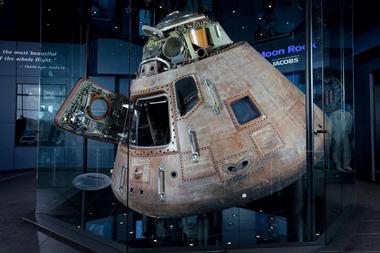
The United States Space & Rocket Center features several simulators to give visitors an opportunity to experience what it is like to be an astronaut for a day. Space Shot gives guests a chance to experience the launch of a rocket. The simulator launches guests 140 straight up using 4G's of force in only 2.5 seconds. The ride provides two to three weightless seconds before a 1G free fall. Guests can also experience triple of gravity's force and train like an astronaut in the G-Force Accelerator. Those on the ride can test their will and strength against the centrifugal force as 3G's push on their body. Visitors can take a ride in the U.S. Space & Rocket Center's new mobile motion theater: Rocket Pod.
This simulator, located in Shuttle Park, takes guests on a journey to view a black hole or view the launch of the Hubble Telescope. These are just two of the five available shows in the simulation theater capable of seating up to twenty people. Visitors also have the opportunity to possibly be a military marvel with the U.S. Space & Rocket Center's Apache simulator. In the simulator, guests can take control of the center's Apache AH-64D Longbow helicopter that has been re-outfitted as they fly through the skies while shooting down enemies using 30mm rounds, Hellfire and Hydra missiles. Visitors also have the chance to learn how to swing in tight on enemies or control a turret as the gunner while piloting one of the country's most lethal aviation machines.
There are also activities available at the United States Space & Rocket Center that give children a chance to get out some of their energy, such as the Kids Cosmos Energy Depletion Zone. In the Kids Cosmos Energy Depletion Zone, children can try being astronauts as they crawl around the International Space Station. Kids can crawl into the rocket and imagine being launched to the moon, or picture docking the command module to the International Space Station. Older visitors can challenge themselves on the Mars Climbing Wall as they scale Olympus Mons, the Milky Way's tallest volcano.
Brick Locator
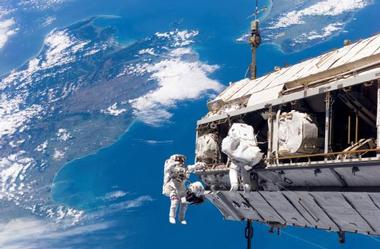
Outside of the Davidson Center for Space Exploration, commemorative bricks encompass the Saturn V rocket in the Apollo Courtyard. Within the commemorative brick collection that honors the innovative scientists and engineers who helped the United States put astronauts on the moon are supporters and alumni of the United States Space & Rocket Center.
National Geographic Theater
The National Geographic in the Davidson Center for Space Exploration presents quality education documentaries in 3D. The movies in the theater found in the Saturn V Hall are displayed on a massive fifty-two foot screen.
IMAX Spacedome Theater
Visitors to the United States Space & Rocket Center can let their senses soar as they watch an IMAX movie at the sixty-seven foot IMAX Spacedome Theater. This theater contains the only IMAX dome screen in Huntsville. The screen fills guests's entire field of sight and surrounds them with the on-screen action.
Archives

The United States Space & Rocket Center Archives include several of the most significant technical documents and historic papers of the twentieth century. Among these documents and papers are the papers of Dr. Wernher von Braun, as well as those of other rocket scientists. In addition to these papers are technical documents about the early space program, Science Fiction data dating from the 1920's, and NASA's special publications from the early years. The space collection of Frederick Ordway III, Technical Advisor for the movie 2001: A Space Odyssey, is also contained within the Archives of the U.S. Space & Rocket Center.
U.S. Space & Rocket Center, One Tranquility Base Huntsville, AL 35805, Phone: 256-837-3400, Map


